Japan is struggling to restore services in the south-western island of Kyushu after it was hit by two powerful earthquakes.
Some 180,000 people are set to spend a third night in temporary shelters, including cars and tents.
More than 62,000 homes remain without electricity and 300,000 homes have no water, Japanese media report.
At least 11 people are still missing following the quakes which killed 41 people and wounded hundreds.
Rescuers used improved weather on Sunday to fly helicopters to the worst-affected areas of Kumamoto prefecture as tremors continued.
The BBC's Robin Brant says concerns persist that another big quake may further damage houses already weakened.
But fears that heavy overnight rain would cause further large landslides appeared to not have been realised.
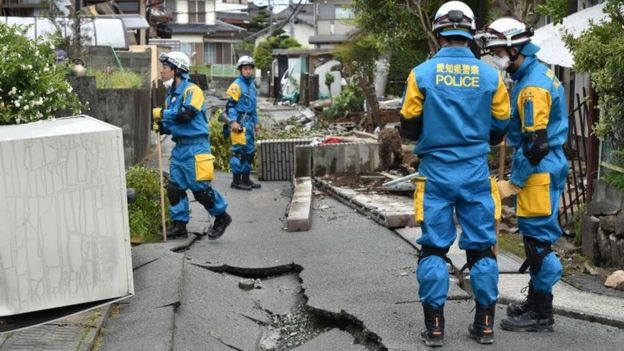 AFP
AFP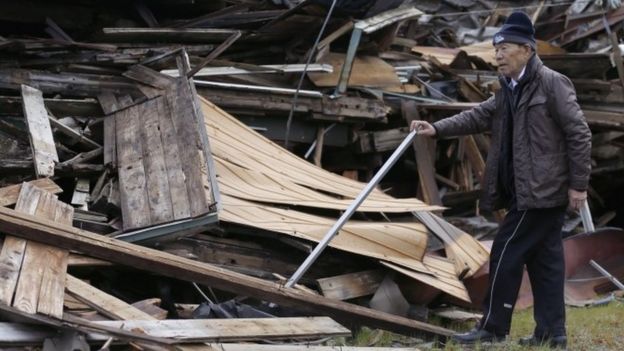 AP
AP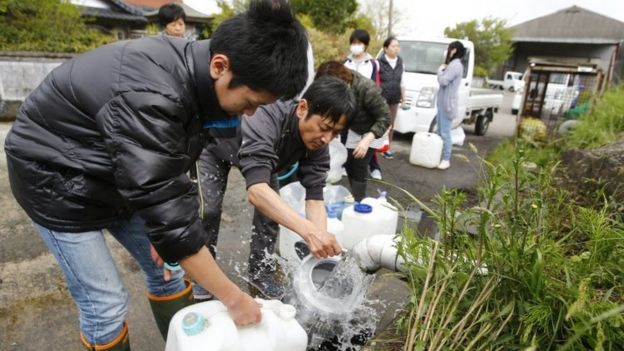 AP
AP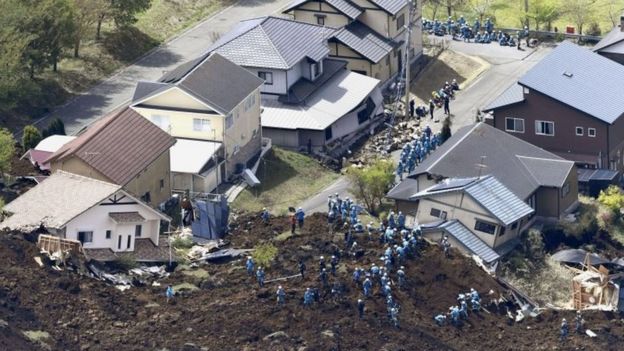 AP
AP
Saturday's magnitude-7.3 quake struck at 01:25 (15:25 GMT on Friday) close to the city of Kumamoto, which had been hit by a magnitude-6.4 quake on Thursday night.
Both quakes were shallow, causing huge damage to roads, bridges and tunnels. Big landslides cut off remote mountain villages.
Some 1,000 buildings have reportedly been damaged and at least 90 destroyed.
About 2,000 people were treated for injuries and nearly 200 remain in a serious condition.
Prime Minister Shinzo Abe announced the number of troops helping in the rescue effort had risen to 25,000, and the US military would provide air transportation.
At the scene: BBC's Rupert Wingfield-Hayes
Across the valley from where I am standing in the small town of Minami-Aso, a huge landslide hundreds of metres long has severed a highway and buried part of the area.
Rescuers using earth-movers are now clearing away tonnes of mud and rock from around the half-buried houses. It's thought at least eight people are buried in the slide, although it could be more.
There has been heavy rain overnight and aftershocks are continuing to strike all the time.
In the badly-hit town of Mashiki thousands of people spent a third night sleeping in evacuation centres, in their cars, or even in the open.
People here are very badly shaken. This part of Japan is not prone to large quakes. Everyone I have spoken to has said the same - they have never experienced anything like this in their lives.
Japanese rescue teams scoured the remains of homes and buildings, and some used shovels to dig through the mountains of soil to try to reach people still trapped beneath.
Most of those missing were from the badly-hit village of Minami-Aso.
There have reportedly been more than 440 aftershocks in the area since Thursday.
With evacuation centres reportedly full to the brim, many people have been forced to stay out in the open.
"I sleep in a car and stay in this tent during the day," one 52-year-old resident of nearby Mashiki told the AFP news agency.
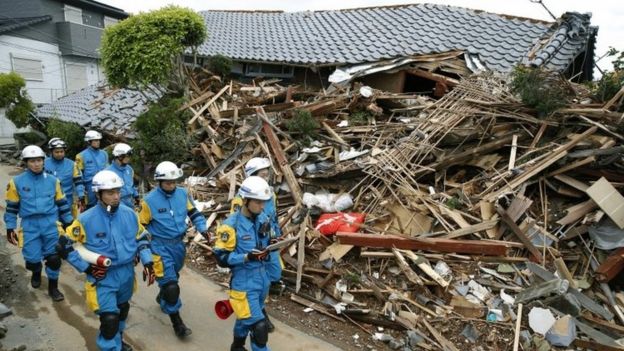 AP
AP
A number of large firms have factories in the Kumamoto region. Electronics giant Sony Corp and motor manufacturer Honda said they were suspending their plants in the region.
Car giant Toyota said its production plants across Japan would have to be suspended because the quakes had disrupted its supply of parts.
Bank of Japan Governor Haruhiko Kuroda, attending a G20 event in Washington, said it was too soon to analyse the economic damage caused by the quake, but bank operations in Kumamoto were still functioning normally.
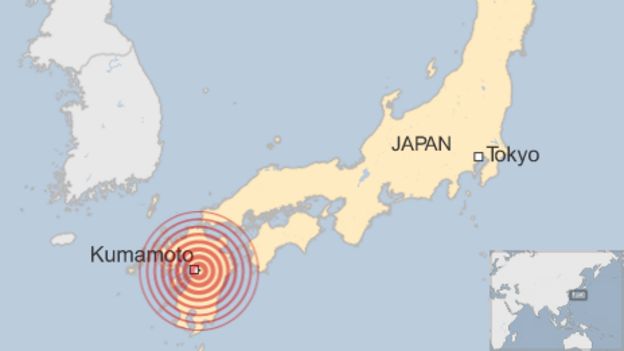
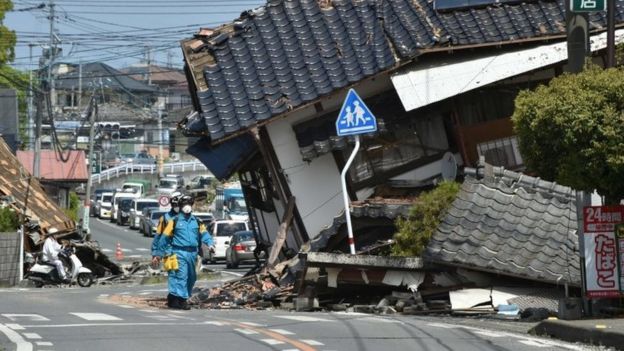 AFP
AFP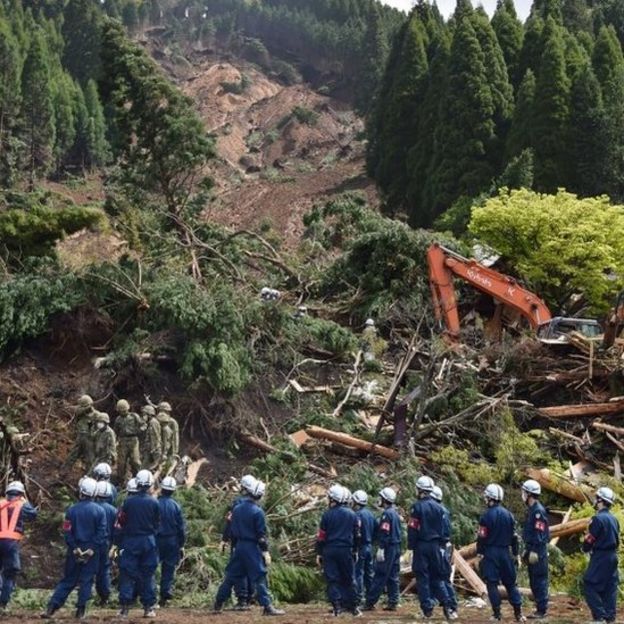 AFP
AFP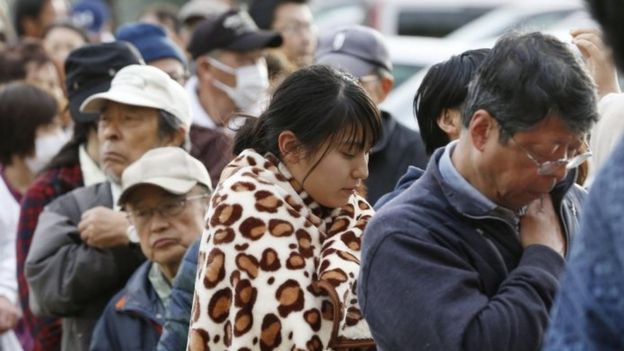 AP
AP
Comments